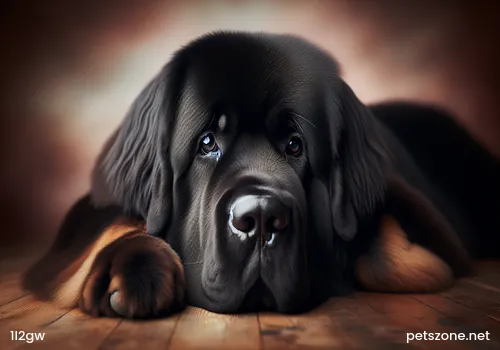The Historical Development and Temperament of the Tibetan Mastiff
The Tibetan Mastiff is a unique dog breed originally from the Qinghai-Tibet Plateau in China, commonly known as the Tibetan Mastiff, also called Tibetan dog, Fan dog, Dragon dog, Qiang dog, and anciently known as Cangni dog. Its large size, fierceness, and drooping ears make it universally recognized as the oldest and rarest surviving dog breed in the world. In ancient Eastern legends, the magical stories about the Tibetan Mastiff have been mythologized as embodiments of courageous guardianship. Its loyal and protective nature makes it not only the best guard dog for nomadic peoples but also the best protector for kings and tribal chiefs. According to interesting Chinese folk legends, the Howling Sky Dog of Erlang Shen is a "four-eyed" Tibetan Mastiff. Nowadays, the Tibetan Mastiff is honored with the title of "Eastern Divine Dog" and is a rare fine breed kept around the world.

Tibetan Mastiff (Detailed Introduction)
I. History of the Tibetan Mastiff
The Tibetan Mastiff has a history of several thousand years. As one of the oldest dog breeds, it is recorded in China’s earliest historical book, the "Shangshu" (Book of Documents), showing that as early as the Spring and Autumn period, this dog was used as a guard dog. According to historical Chinese literature, the nomadic Qiang people tamed wild dogs that followed herders to fend off attacks and threats from other fierce beasts. These dogs guarded tents, protected cattle and sheep, and became loyal partners to the herders – this likely represents the earliest form of the Tibetan Mastiff.
In the extremely harsh survival environment of the Qinghai-Tibet Plateau, the Tibetan Mastiff underwent natural selection. Herders bred stronger, larger, fiercer, loyal, and livestock-savvy individuals to preserve the purebred lineage. Later, during the Qianlong era of the Qing Dynasty, Fu Qing, the Qing government commander stationed in Tibet who accompanied the Panchen Lama eastward, brought a Tibetan Mastiff to Beijing. The court and officials admired the dog's heroic bearing and majestic presence. Italian painter Giuseppe Castiglione, following the emperor’s orders, painted the last of his "Ten Dogs" series, entitled "Cangni," depicting this Tibetan Mastiff.
However, whether in modern or contemporary times, it was first the Westerners who recognized and promoted the breed's value. In the early 18th century, the British started breeding Tibetan Mastiffs and established pedigree records. In 1947, the first Tibetan Mastiff was brought to the United States. In 1973, to better protect, study, and breed this nearly extinct breed, the American Tibetan Mastiff Association was founded.
II. Physical Characteristics of the Tibetan Mastiff
Marco Polo provided a detailed description of the Tibetan Mastiff in his travelogue, describing it as "as tall as a donkey, roaring like a lion, extraordinarily fierce." He was the first Westerner to document the Tibetan Mastiff in writing.
Due to differences in living regions, the Tibetan Mastiff's appearance varies. Normally, it holds its head and neck high, with a majestic bearing, proper proportions, muscular build, lion-like strength, and large body size about 120 cm long. The fur is coarse and thick, with a shorter outer coat and dense undercoat; it prefers cold and dislikes heat. The best-quality Tibetan Mastiffs come from the Nagqu region of Tibet. They have dense manes, broad chests, sharp and penetrating eyes, reserved and profound expressions. Tibetan Mastiffs from Qinghai have almost no mane, shorter coats, and larger bodies, but their temperament is less fierce and steady compared to typical Tibetan Mastiffs.
III. Temperament of the Tibetan Mastiff
A true Tibetan Mastiff exudes a regal presence without anger. The harsh highland environment shaped its strong will and disdainful expression, while bestowing it with kingly qualities. It is solitary and aloof, fierce and brave, noble and elegant, loyal and devoted, with endurance for hunger, cold, and all hardships – qualities which make it deeply attractive. Therefore, Tibetan Mastiffs typically guard their territory and food, show good attacking skills, possess great strength and fierceness, retain wild instincts that intimidate others, and display strong hostility toward strangers but immense affection toward their owner.



